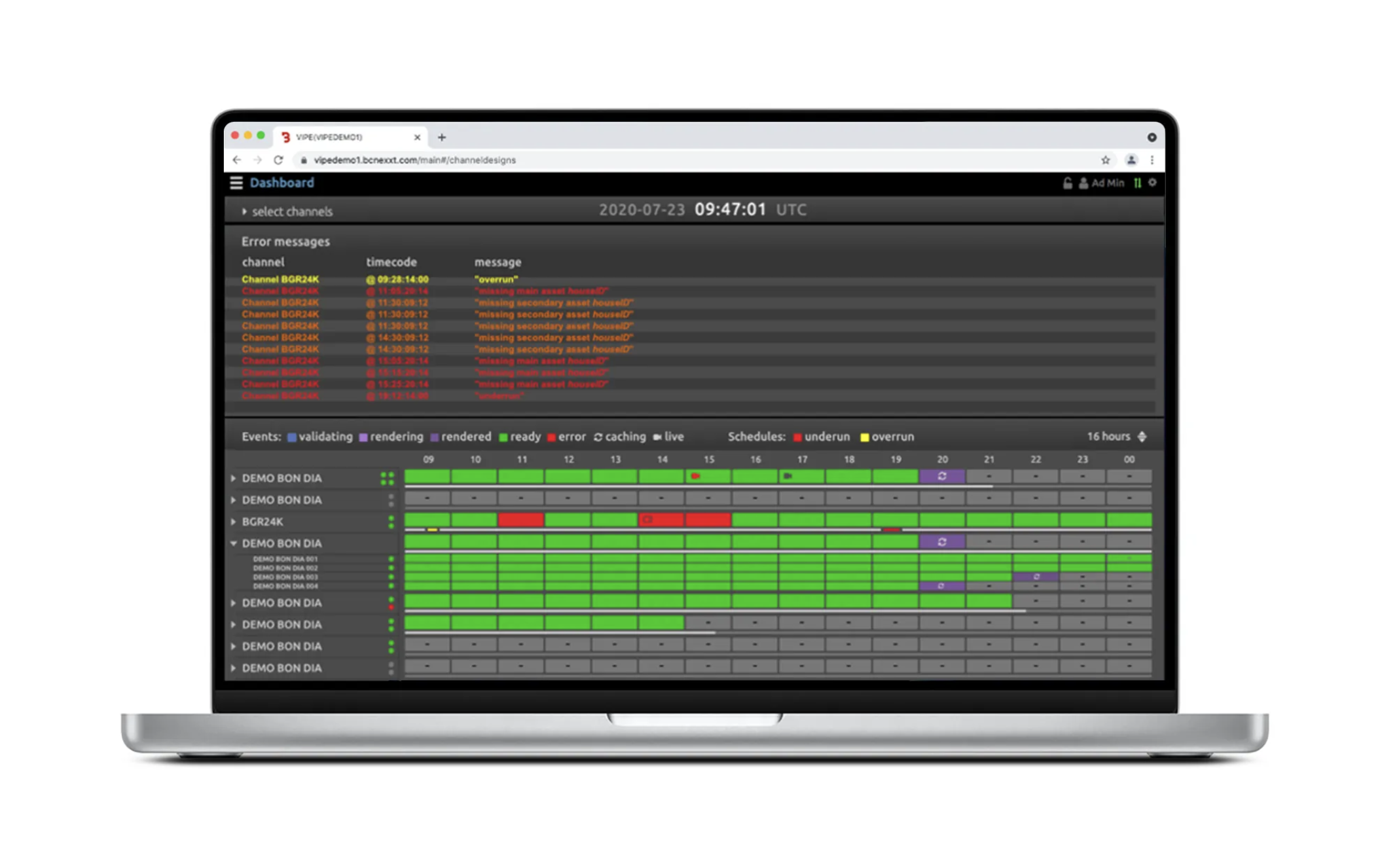De-stress Your Playout Operations
Broadcast and streaming operations are complex, but that doesn’t mean your playout workflow has to be stressful it shouldn’t feel like crisis management. With modern technology, broadcasters no longer need to rely on outdated, high-risk, resource-heavy infrastructure to keep channels on air. So how can you save the (broadcast) day and your sanity?
Here are 10 practical ways to keep calm, reduce the stress, risk, and resource strain in your playout operation while improving efficiency and future-proofing your infrastructure.
1. Trap content errors early
In playout, bringing the content elements together at the point of onair increases the requirement for last-minute fixes and therefore the risk of on-air errors. Pre-rendering content ahead of time, into the transmission stream format, gives you breathing room to identify and fix issues early, reducing the pressure at on-air time.
2. Automate your Quality checking
Assembling or rendering your programs well ahead of time, enables you to automatically quality check the content, instead of manually eyeballing it at the point of playout. Automating QC checks allows your system to verify the content, its alignment to the schedule and the integrity of the transmission stream file, flagging issues for review well in advance of playout.
3. Assemble on your schedule, not the programs
Processing your schedules early, days in advance if possible shifts the whole focus away from the on-iar time. By scheduling rendering and QC during office hours, your team can handle problems when resources and support staff are readily available, avoiding burnout and last-minute surprises.
4. Utilise exception driven reporting and management.
Exception-based workflows use automation to manage routine tasks, including the QC process. Operators are only notified if a problem arises, reducing false alarms and eliminating the need for constant manual oversight. It's a smarter, leaner way to manage playout.
5. Break the one-channel, one-server relationship
Traditional systems require one high-end server per channel of playout that processes everything, requiring a second equally powerful server for redundancy. By breaking down the processes to assembly and playout, and shifting the assembly ahead of time, the playout servers become very light weight, or capable of multiple channels and easier and more cost effective to duplicate for redundancy. The assembly servers don’t need duplication for redundancy because they are working ahead of time and can be replaced easily off line.
6. Distribute, don’t concentrate.
Once the processes are broken down, and the encoding is done as part fo the assembly process, the transmission stream files can be transferred to cache storage on the lightweight playout servers and can easily be duplicated and distributed for redundancy. By parsing a schedule to these playout servers, they will run independently even if network or connection disruption is experienced.
7. Set up your autopilot
Mistakes happen, but with automated fallback rules in place, the system can swap in evergreen content, fail over to alterntive audio channels or insert emergency slates as required, resulting in fewer operator interventions and therefore fewer on-air errors.
8. Automate communications
Integrate issue alerts directly into dashboards, email, or other monitoring systems, provide missing content lists via API’s and further reduce manual processes that may lead to an operator error, such as a misspelling. The right people get notified immediately when there’s a true exception, giving your team time to respond before issues escalate.
9. Utilise a common platform for all distrubtion channels
Assemble linear, FAST, VoD and streaming assets all from the same content pool, checking audio, subtitling and compliance requirements as you go, using a common easy to use, exception driven interface. Operator errors are significantly reduced because information is presented in a logical, easy to understand interface, rather than switching beween multiple systems, sourcing different content versions.
10. Eliminate weak links
Stress-free playout starts with a resilient, flexible architecture. With platforms like Vipe providing architectures that make 99.9999% uptime possible, Broadcasters can confidently automate processes, reduce manual tasks, and focus on delivering high-quality, reliable programming at lower cost.
No more firedrills
Modern playout doesn’t need to be stressful. By embracing automation, pre-rendering, exception-based workflows, and scalable infrastructure, broadcasters can improve efficiency, reduce operational pressure, and future-proof their operations.
Ready to take the stress out of your playout? Discover how Vipe can help https://www.bcnexxt.com/resources




















.jpg)


.png)



















